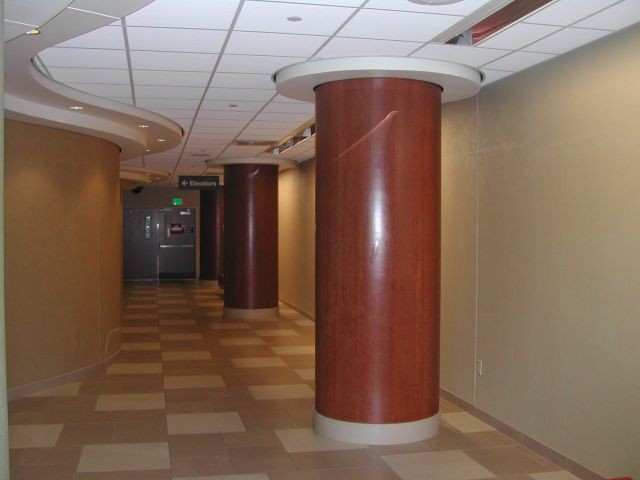Question
I've been getting requests to produce moldings for homes. I own a 3hp shaper and I wonder how practical this is compared to a machine like the W&H molder for making moldings? If the way to go is a molder like the W&H, is the 2hp enough power? Would changing to a 5hp be the better way to go?
I also see that Wilke machinery has a molder much like the W&H with a 3hp. Does anyone know about this machine?
If the way to go is using my 3hp shaper, should I use a molder head? Also, what head and cutters should I go with?
Forum Responses
(Architectural Woodworking Forum)
From contributor B:
The problem with running mouldings on a shaper is that the fence and the cutter head are both on the same side of the wood. In a moulder, the table is below the wood and the cutter head above. As such, the flat back of the wood remains on the flat table while the top of the wood is profiled by the knives.
On the shaper, the flat table surface - the fence - is on the same side of the wood as the cutter head. As such, a flat outfeed fence will usually not support the moulding after it has been profiled. You need to create a custom outfeed fence for most profiles you would want to run. For an occasional run of mouldings, this is okay... For any kind of production, it is not.
The W/H moulders are designed to run with 2hp motors. However, many people have upgraded them to 3hp. A 5hp motor would be too powerful and it wouldn't be long before you blew up the transmission on the W/H.
Also, even with a 3hp motor, it takes several passes on the W/H to run most profiles. At about 10 feet per minute, this is a slow process. I know the W/H is sold as a moulder, but in my opinion it really wouldn't be a profitable machine for straight run work. Curved work is another story.
When asked, I recommend purchasing something along the lines of the Belsaw or Woodmaster moulders. These are designed to run with 5hp motors and are much larger and heavier duty machines than the W/H. I know of people who have made a living running straight mouldings on that class machine.
We generate about 100 yards of sawdust every 3 to 4 weeks. This is for about 30,000 feet of moulding and it fills up a 45' long trailer. Also, you need a forklift and truck to deliver. A dust collector for a small 4 head moulder starts at 10 to 15 hp.
Call your wood suppliers. They can run moulding for you as a start. Mark it up 25 to 30% and see if that is the way you want your business to go. There is a lot to consider - even buying the moulding already run. How much overrun is okay? Do they need the moulding primed? What if they need 50' more? Good luck whichever way you go.
The machine consisted of a 9" wide corrugated head over a solid table with feed wheels and hold downs before and after the head. My thoughts ran to curved moldings - like U S Concepts and others - and whether these could be adapted. They appeared to be solid little machines. I think one supplier called them "one head molders" - a good term. These types of machines solve the problem as described by B H Davis and yield consistent thickness control.
Outside of the knife issue, I hated the feed mechanism on the machine. It was terribly difficult to set up, as far as infeed and outfeed pressure rollers.
We were taking a very hefty cut, one that Woodmaster said would work. That probably played a role in my disappointment. But, that is the type of profiles we run, so the machine wasn't for us.
I was looking over that Bridgewood single head moulder. Looks like a good machine for us. I couldn't find the Grizzly, unless you're talking about the type that is modeled off the Williams & Hussey. The only thing about the Bridgewood is the 6" width. I would prefer at least 7 to 8".
Williams and Hussey is an excellent machine. To do high production, you would need 3 or 4 of them, but there are shops that do just that. Setup is a breeze because they use indexed knives. We usually hog off down to within 1/32 inch and then run a finish pass. The finish is stain grade and requires no sanding.
Logisol is a good machine, but probably more for flooring rather than moulding. Not enough heads, I think.
I don't feel that making moulding on a shaper is practical or safe. A shaper is a wonderful machine but must be used wisely.
